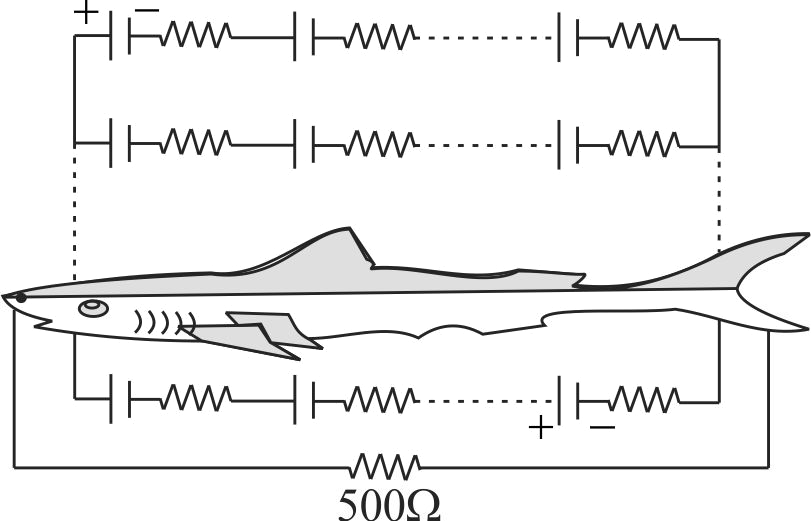356881
Eels are able to generate current with biological cells called electroplaques. The electroplaques in an Eel are arranged in 100 rows, each row stretching horizontally along the body of the fish containing 5000 electroplaques. The arrangement is suggestively shown below. Each electroplaque has an emf of 0.15 \(V\) and internal resistance of \(0.25\,\Omega \). Find the current in the external resistor.
356881
Eels are able to generate current with biological cells called electroplaques. The electroplaques in an Eel are arranged in 100 rows, each row stretching horizontally along the body of the fish containing 5000 electroplaques. The arrangement is suggestively shown below. Each electroplaque has an emf of 0.15 \(V\) and internal resistance of \(0.25\,\Omega \). Find the current in the external resistor.
356881
Eels are able to generate current with biological cells called electroplaques. The electroplaques in an Eel are arranged in 100 rows, each row stretching horizontally along the body of the fish containing 5000 electroplaques. The arrangement is suggestively shown below. Each electroplaque has an emf of 0.15 \(V\) and internal resistance of \(0.25\,\Omega \). Find the current in the external resistor.
356881
Eels are able to generate current with biological cells called electroplaques. The electroplaques in an Eel are arranged in 100 rows, each row stretching horizontally along the body of the fish containing 5000 electroplaques. The arrangement is suggestively shown below. Each electroplaque has an emf of 0.15 \(V\) and internal resistance of \(0.25\,\Omega \). Find the current in the external resistor.